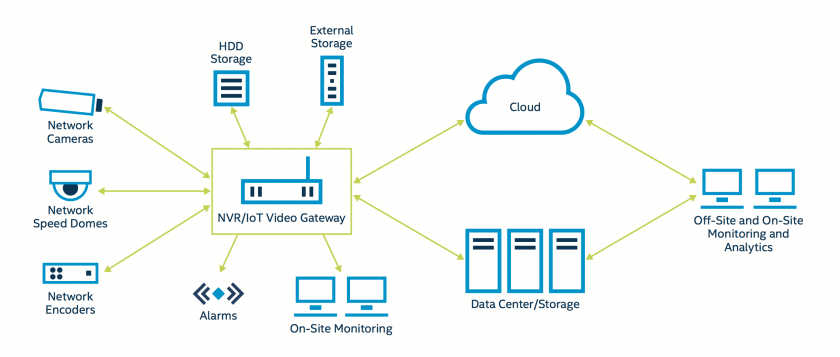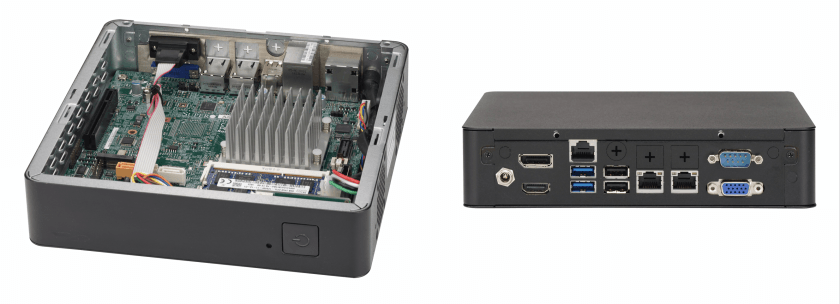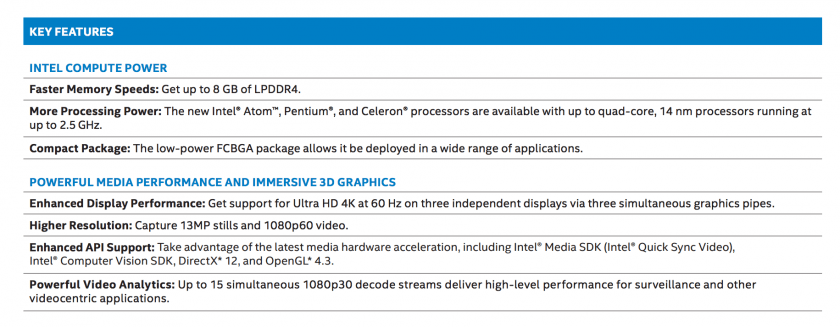Fill form to unlock content
Error - something went wrong!
Submit the information below to access the paper.
Thank you!
What’s Different About Surveillance Servers?
As surveillance systems continue to evolve, the surveillance server has become a completely different animal from a standard server. Knowing a bit about the forces transforming surveillance can help you build the fittest server in the jungle.
Surveillance Trends
Before we dig into the trends, it is worth noting that surveillance servers come in many breeds. Examples include standalone servers, network video recorders (NVRs), and IoT video gateways (Figure 1). Regardless of form, all servers must capture, archive, and manage video from multiple cameras.

Figure 1. Surveillance servers come in many varieties.
In addition to these basic requirements, servers are increasingly called upon to perform video analytics—things like people counting, object detection, and scene analysis. These new capabilities allow servers to venture into new applications such as intelligent traffic control, illegal parking alerts, and border intrusion prevention.
According to Kanti Bhabuthmal, Director of Product Marketing at Supermicro, the demand for video analytics and computer vision is one of the key factors changing surveillance system design. The intense demands of machine vision are dramatically increasing server performance requirements.
And machine vison is not the only factor driving performance: As high-resolution, high-frame-rate cameras come down in price, surveillance servers need to deal with more raw data than ever before. The same is true for user displays, as many surveillance stations are now equipped with multiple 4k displays.
On top of all this, surveillance servers often have tough environmental constraints. They are often relegated to tight spaces that require compact designs. Moreover, DSS systems should incorporate the latest advances in green technologies as their 24/7/365 operation can have a significant impact on electric bills. And of course, high reliability is a must-have as well.
Designing a Surveillance Server
What does it take to build a modern surveillance server? The basic components are:
- A speedy, power-efficient processor
- Ample high-bandwidth I/O
- Reliable, high-volume storage
- Robust security
- 4k display support
To get some specifics, let's look at Supermicro’s SYS-E200-9AP entry-level server (Figure 2). Based on the Intel® Atom™ x5-E3940 processor, this server features a 2.5″ internal drive bay and dual GbE LAN ports.

Figure 2. The Supermicro SYS-E200-9AP is an entry-level server. (Source: Supermicro)
The Intel® Atom™ processor at the heart of the server is built in a 14nm process for power-efficient performance. The chip graphics engine that speeds up encode and decode tasks while relieving the load on the server CPU.
As shown in Figure 3, the graphics engine can capture video up to 4Kp30, slow-motion video at 1080p120, and 13 MP stills. Moreover, the processor can decode up to 15 simultaneous 1080p30 streams from multiple IP cameras.

Figure 3. The Intel® Atom™ E3900 series has many upgrades that benefit surveillance. (Source: Intel)
To power real-time video analytics, the processors support enhanced APIs like Intel® Computer Vision SDK. This SDK enables next-generation surveillance features like visual data identification and analysis, traffic management and monitoring, agriculture and pipeline monitoring, and manufacturing inspection.
In terms of I/O, the Intel Atom E3900 processor supports high-speed USB 3.0, PCIe, and SATA 6Gbps ports—for faster throughput and minimal latency in the transport of real-time video analytics. The processors also offer networking options that include 10/100/1000 Mbps self-adaptive Ethernet interfaces.
It’s also imperative that surveillance servers, which are used to enhance security and safety, are themselves well protected. To this end, the Intel Atom processors come equipped with Intel® Trusted Execution Engine (TXE), which helps secure data even if the server OS is compromised.
High-res displays are also covered. The chips can power up to three independent displays at resolutions up to 4096 x 2160.
Bring Your Server to Life
Of course, hardware is only the start. That's why Supermicro works with software vendors to create server and storage platforms that include, for instance, video management and analytics software.
And you may need a different set of features than what we've described here. The breadth of Intel® processor options allows Supermicro to offer a wide variety of other options. These include motherboards and other components so you can build your own server.
However you decide to build your server, the important thing is to keep in mind that surveillance servers are different. Make sure you plan accordingly!